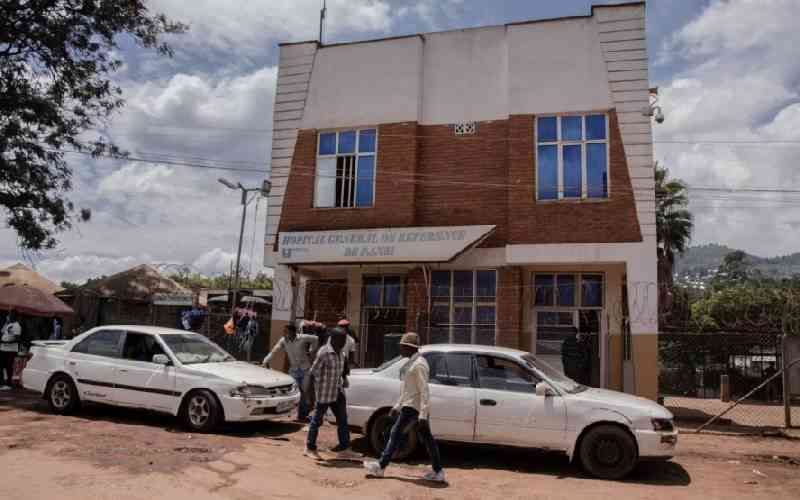The locust invasion, Covid-19 pandemic and excessive flooding caused by rising water levels of Lake Victoria, among other socio-economic disasters are sending shock waves to government, policy makers, teachers, learners, parents, investors and researchers.
According to the international vulnerability Index (2020), Kenya is ranked among the top 10 in the world and first in Africa to be most impacted country by the coronavirus pandemic. This is based on rate and means of virus spread, economic connection to China and state of the country's resilience infrastructure.
With the closure of all learning institutions to contain the spread of Covid-19, the dilemma Kenya is facing is how to continue with education at all levels and coming up with immediate and long-term strategies that promote inclusion, equity and quality of learning. The implementation of CBC, which was launched early this year, makes this challenge topical.
One of the best solutions that is effectively being used in more industrialised countries, and in some African ones like Tunisia and South Africa, is virtual learning. This is done through distance learning platforms like e-learning, distance and correspondence education, external studies, flexibility education and massive open online courses.
This is being achieved through one-way massive broadcasting (TV and radio programmes), or through web-based exchange using social media channels.
But there is a catch. Countries with effective e-learning have reliable access to use of technology solutions based on the reliability of local power supplies, internet connectivity, spread of ownership of smart phones and equal digital skills of teachers and learners. Kenya is disadvantaged in these fronts.
Less than 20 per cent of Kenyan children experience positive and stimulating home environment (based on level of poverty), and have regular access to electricity, smart phones, TVs and computers and access to internet.
Children from well-to-do homes can easily access e-learning materials and be supervised effectively by teachers or private tutors. However, the most hit are children from poor and vulnerable families, especially in rural areas and informal settlements across the 47 counties.
This means in current time when learners of all ages, including those in institutions of higher learning, need support to continue learning from home, such learners are disadvantaged.
The Covid-19 pandemic among other socio-economic and environmental disasters have provided important lessons and opportunities for Kenya, including the need to invest in connectivity and e-learning, enhancing science, technology and innovation as enablers of socio-economic transformation and job security.
They have also provided strong functioning national and community learning platforms and facilities. They have effective, comprehensive and inclusive social protection programmes targeting the marginalised and vulnerable people and regions.
Comprehensive Investment
Going forward, Kenya needs public and private investment in the following areas to promote and sustain quality education, teaching-learning, supervision, monitoring and assessment across all institutions in the country.
They need to conduct countrywide comprehensive school needs assessment to determine teaching-learning facilities, including infrastructure to inform investment in education.
These include promoting readiness for virtual (e-) learning by promoting access to and use of appropriate technology in all parts of the 47 counties, and making sure that all children have access to digital learning platforms, electricity, telephones, televisions, radio, digital devices, internet connectivity and data bundles.
Stay informed. Subscribe to our newsletter
The other is having teaching-learning materials in a digital form that is appropriate, accessible, protected and usable by all learners and teachers.
The country should also prepare and continuously train teachers and quality assurance and standards staff in all sub-counties to have skills and capacity to monitor, supervise, and assess e-learning.
The other area is investing in ICT champions and preparing parents, guardians and the private sector to support e-learning. Targeting the marginalised and vulnerable learners, including children with special needs, is critical.
Finally, it should invest in policy oriented research, monitoring, evaluation and learning to generate dis-aggregated data to be used for policy and planning to enhance virtual learning.
– Writer is Public Policy Analyst and Senior Researcher at the Centre for Research and Development. ([email protected])
 The Standard Group Plc is a
multi-media organization with investments in media platforms spanning newspaper
print operations, television, radio broadcasting, digital and online services. The
Standard Group is recognized as a leading multi-media house in Kenya with a key
influence in matters of national and international interest.
The Standard Group Plc is a
multi-media organization with investments in media platforms spanning newspaper
print operations, television, radio broadcasting, digital and online services. The
Standard Group is recognized as a leading multi-media house in Kenya with a key
influence in matters of national and international interest.
 The Standard Group Plc is a
multi-media organization with investments in media platforms spanning newspaper
print operations, television, radio broadcasting, digital and online services. The
Standard Group is recognized as a leading multi-media house in Kenya with a key
influence in matters of national and international interest.
The Standard Group Plc is a
multi-media organization with investments in media platforms spanning newspaper
print operations, television, radio broadcasting, digital and online services. The
Standard Group is recognized as a leading multi-media house in Kenya with a key
influence in matters of national and international interest.








